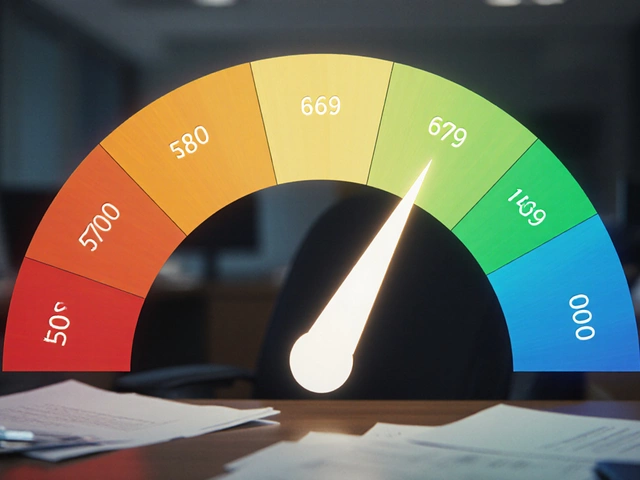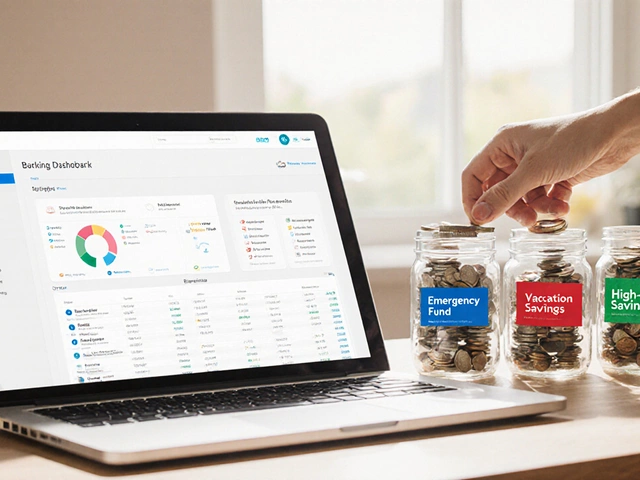
Golden Cross Checker
Enter stock data to check if it forms a golden cross pattern:
Ever glanced at a chart and wondered why a sudden surge felt more like a promise than a fluke? That feeling usually comes from a classic technical pattern known as the golden cross. In plain terms, it’s when a short‑term moving average (most often the 50‑day) climbs above a long‑term moving average (commonly the 200‑day). Traders treat the crossover as a bullish signal, assuming the price may keep climbing. But like any signal, it’s not foolproof. Let’s break down what the golden cross really is, how to spot it, and how to use it without getting burned.
Quick Takeaways
- The golden cross occurs when a short‑term moving average crosses above a long‑term moving average.
- It signals a potential shift from a downtrend to an uptrend, but confirmation is key.
- Combine the cross with volume, price action, and risk management for better odds.
- Compare it to the opposite pattern - the death cross - to avoid misreading market sentiment.
- Use a simple checklist before acting on a golden cross to keep emotions in check.
Below we’ll walk through the mechanics, the math, real‑world examples, and a handy checklist that any trader can follow.
Understanding the Core Concept
Golden Cross is a technical analysis pattern where a short‑term moving average moves above a long‑term moving average, suggesting a possible bullish trend. The most popular pair is the 50‑day simple moving average (SMA) crossing the 200‑day SMA. When the faster line (50‑day) pierces the slower line (200‑day) from below, many chartists interpret it as a shift in momentum.
Why moving averages? They smooth out daily price noise, giving a clearer view of the prevailing direction. A Moving Average the average price of a security over a set number of periods, recalculated each period can be simple (SMA) or weighted (EMA). The golden cross typically uses simple averages because they’re easy to compute and widely accepted.
How the Golden Cross Is Calculated
- Collect the closing prices for the last 50 trading days.
- Sum those prices and divide by 50 - that’s the 50‑day SMA.
- Do the same for the last 200 trading days to get the 200‑day SMA.
- Plot both lines on the same chart. When the 50‑day line crosses above the 200‑day line, the golden cross is triggered.
Here’s a quick numeric example: suppose a stock closed at $100 on day 200, $101 on day 199, … and $150 on day 151. The 200‑day SMA might sit around $112. If the 50‑day SMA rises to $115, the crossover occurs.
Why Traders Love the Golden Cross
From a Technical Analysis the study of past market data, primarily price and volume, to forecast future price movements perspective, the golden cross offers a clear, visual cue. It’s also an objective rule, so you can back‑test it across decades. Historically, a golden cross has preceded sizable up‑moves in many major indices - the S&P 500, the ASX 200, and even some large‑cap tech stocks.
However, the signal’s reliability varies across markets and time frames. In a choppy sideways market, you might see multiple false crosses that quickly reverse. That’s why many seasoned traders pair the golden cross with other filters.
Confirmation Tools: Volume, Price Action, and Trend
Volume is the loudest voice behind a move. A golden cross accompanied by a spike in average daily volume suggests genuine buying interest. Conversely, low volume may indicate a weak crossover that could fizz out.
Price action - the shape of the candles around the cross - also matters. Look for higher highs and higher lows forming after the crossover. If the price still makes lower lows, the trend may still be bearish despite the moving‑average signal.
Finally, assess the overall Trend the general direction in which a market or security is moving over a period of time. If the market has been in a prolonged downtrend, a golden cross could simply be a temporary bounce. In contrast, if the broader market is already bullish, the cross may reinforce the prevailing direction.
Golden Cross vs. Death Cross
Every silver lining has a shadow. The death cross is the exact opposite: the short‑term moving average drops below the long‑term moving average, signaling possible bearishness. Comparing the two helps you avoid being overly optimistic.
| Aspect | Golden Cross | Death Cross |
|---|---|---|
| Direction | Short‑term MA crosses above long‑term MA | Short‑term MA crosses below long‑term MA |
| Typical Signal | Bullish - potential uptrend | Bearish - potential downtrend |
| Common Time Frames | 50‑day vs. 200‑day SMA (also 20‑day vs. 50‑day) | Same as golden cross |
| Volume Confirmation | Higher volume supports bullish case | Higher volume supports bearish case |
| Success Rate (Historical) | ~60‑70% in strong‑trend markets | ~55‑65% in weak‑trend markets |

Real‑World Example: Australian Mining Stock
Take the ASX‑listed miner BHP Group one of the world’s largest diversified natural resource companies. In March 2024, its 50‑day SMA crossed above the 200‑day SMA while daily volume surged to 1.5× the 30‑day average. The price that day rose 3% and continued a 12‑week up‑trend, gaining roughly 28% before a later correction.
Contrast that with a tech stock that posted a golden cross in July 2024 yet fell 5% over the next two weeks. The volume was flat, and the broader market was in a correction phase, showing how context matters.
Golden Cross Checklist (Your Pre‑Trade Routine)
- Signal Confirmation: Verify that the 50‑day SMA truly crossed the 200‑day SMA on the same day.
- Volume Surge: Check if daily volume is at least 1.2× the 30‑day average.
- Price Action: Look for higher highs and higher lows in the following 5‑10 trading days.
- Overall Trend: Ensure the broader market index (e.g., ASX 200) is in an uptrend.
- Risk Management: Set a stop‑loss below the recent swing low or below the 200‑day SMA.
- Position Size: Allocate no more than 2‑3% of total capital to this trade.
- Exit Strategy: Plan to take partial profit if the price climbs 15‑20% and move the stop to break‑even.
Following this checklist can filter out many false signals and keep your portfolio from unnecessary whiplash.
Common Pitfalls and How to Avoid Them
Risk Management the process of identifying, assessing, and controlling threats to an organization’s capital and earnings is the most overlooked part of golden‑cross trading. Here are three mistakes you’ll often see:
- Ignoring Volume: A cross on low volume is like a rumor - it may not hold water.
- Over‑Leveraging: Using margin to buy huge positions after a cross can amplify losses if the signal fails.
- Skipping Confirmation: Jumping in before the price shows higher highs can trap you in a losing trade.
Mitigate each by applying the checklist above and sticking to a disciplined plan.
Back‑Testing the Golden Cross
If you love data, back‑test the strategy on your preferred market. Here’s a simple approach:
- Gather daily price data for the last 10‑15 years for a stock or index.
- Program a rule: Buy at the close of the day the 50‑day SMA > 200‑day SMA and volume > 1.2× average.
- Sell after a 20% gain or if the 50‑day SMA drops back below the 200‑day SMA.
- Record win‑rate, average return, and maximum drawdown.
Most retail back‑tests show a win‑rate around 60% with a modest Sharpe ratio. Adjusting the moving‑average periods (e.g., 20/100) can fine‑tune the balance between early entry and false signals.
Putting It All Together: A Sample Trade Flow
- Spot the golden cross on the chart of a mid‑cap Australian retailer.
- Confirm volume is 1.5× the 30‑day average.
- Check that the ASX 200 index is in a clear uptrend.
- Enter a long position at the closing price, allocating 2% of your capital.
- Set a stop‑loss 3% below the 200‑day SMA.
- Monitor price action for higher highs; if they appear, move the stop‑loss to break‑even.
- Take partial profit at 15% gain, let the rest ride until a 30% target or a death cross appears.
By following these steps, you turn a simple visual cue into a structured, risk‑aware trade.
Bottom Line
The golden cross is a handy tool in a trader’s toolbox, but it’s not a magic bullet. Treat it as a starting point, confirm with volume and price action, and always protect your capital. With a disciplined checklist and a clear exit plan, the golden cross can become a reliable ally in navigating market trends.
Frequently Asked Questions
What time frame is best for spotting a golden cross?
Most traders use daily charts with the 50‑day and 200‑day SMAs. However, the concept works on weekly or even intraday charts; just adjust the period lengths proportionally.
Can a golden cross happen in a sideways market?
Yes. In a range‑bound market you may see multiple crosses that quickly reverse. That’s why volume and price‑action confirmation become critical.
How does the death cross differ from a golden cross?
A death cross is the opposite: the short‑term MA falls below the long‑term MA, suggesting bearish momentum. It often precedes a downtrend, especially when accompanied by falling volume.
Should I use exponential moving averages (EMAs) instead of SMAs?
EMAs respond faster to price changes, so a crossover may happen earlier. Some traders prefer EMAs for a quicker signal, but SMAs are more widely studied historically.
Is the golden cross reliable for short‑term trading?
It’s better suited for medium‑ to long‑term horizons. Short‑term traders often combine it with momentum oscillators (e.g., RSI) to filter out noise.








Write a comment